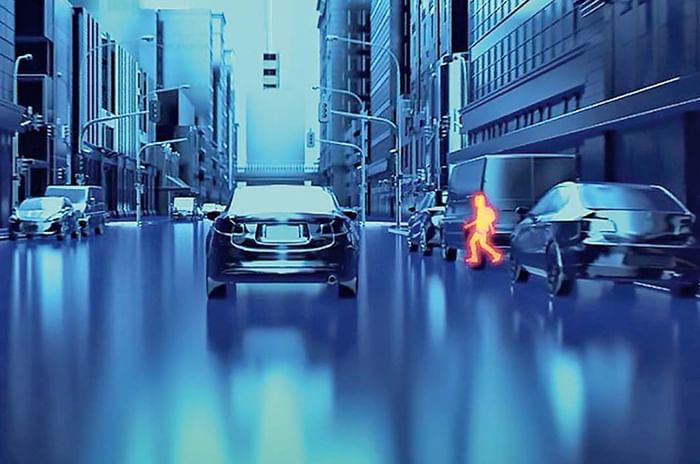During the past year, new precision paint processes have emerged, that promise to speed up the manufacturing of cars, make it more sustainable and allow manufacturers to offer a wider range of colour options and decorative finishes. Earlier this year, Under the Skin looked at ABB’s new robotised Pixelpaint, a technology that applies paint in a similar way to an inkjet printer, creating sharp edges to the paint rather than the soft blur associated with conventional spray guns. It also means there’s no overspray and the company claims 100 percent of the paint is applied to the car. By contrast, around 20 percent of the paint applied by conventional techniques ends up in the spray booth filters. German company Dürr has a similar technology called Ecopaintjet being trialled by BMW and the process is already in use at Audi.
Traditionally, painting a car is one of the messiest and most wasteful aspects of the production process. In the past, paint from high-pressure spray guns would bounce off the surface of the car’s bodywork, creating a mist of paint droplets that would be sucked away from the spray booth by fans and filtered. Then came HVLP guns (high volume, low pressure), which made a considerable improvement. But any two-colour processes (such as different-coloured roof panels) still involve the time-consuming process of applying and drying the first colour, masking it with tape and paper to protect it from overspray, and then applying the second colour.
The new robot systems are quite different. The Pixelpaint spray head is equipped with 1,000 nozzles that fire tiny droplets of paint, the smallest of which is about the size of two human blood cells, giving pin-sharp edges to the paint as it’s applied. The Ecopaintjet robot is similar, applying paint through a nozzle plate perforated by 50 tiny holes from a distance of 30mm. Prior to any painting job, a measuring system makes paint-free passes over the shell, working out its precise shape, so the robot can track its way over the surface evenly. Software uses that data to calculate the paths the applicator needs to take as it travels over the surface of the bodywork, controlling the speed and tilt angle of the spray head at the same time.
Once that’s done, the robot can begin painting, covering about 1.8 square metres per minute and taking around two minutes to finish a typical car roof panel. To do the job in the traditional way by removing the body from the paint line, Dürr estimates that masking it and applying the second colour would take several people 50 minutes. The new method also saves around 15 square metres of masking tape and film per bodyshell. In addition, it’s reckoned that the new technique makes energy savings of up to 25 percent during the paint drying process.
BMW is testing the same technology on an in-house fleet of 19 M4 Coupés, applying two-tone paint and M4 logos on the boot and bonnet. BMW estimates that if the system is adopted, the reduction in energy filtering overspray from the air in spray booths could make an energy saving of 6,000MWh over 7,000 operating hours and reduce the carbon footprint of its manufacturing processes by 2,000 tonnes of CO2 a year.
Cars with superman vision

Autonomous cars with ‘X-ray’ vision? The University of Sydney and Choda Wireless have completed a three-year R&D project called Cooperative Perception, which lets a connected vehicle track the path of a pedestrian obscured by buildings. The system works by enabling vehicles to ‘see’ what other vehicles are seeing, increasing their range of perception by having access to different viewpoints.












.jpg?w=728&q=75)



.jpg?w=728&q=75)








